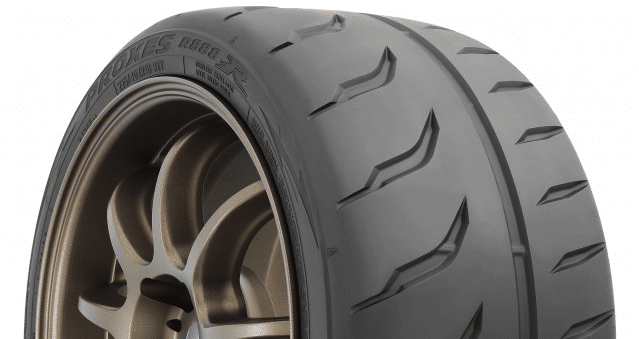All Categories
Featured
Table of Contents
The Michelin used a comfy driving experience, characterised by receptive guiding and a progressive understeer balance. Regardless of the cooler screening conditions, Michelin's consistent time and hold over three laps shows its suitability for real-world applications.
One more remarkable aspect was Yokohama's warm-up time. The tyre's first lap was a second slower than the 2nd, pointing to a temperature-related grasp boost. This suggests the Yokohama could radiate in completely dry, race-like conditions. For daily use, the Michelin might be a much safer wager. Successor was the Hankook.
Affordable Tyre And Wheel Services Near Me – Kiara WA
It shared Michelin's risk-free understeer equilibrium however did not have the latter's willingness to transform. Continental and Goodyear's performances were significant, with Continental's brand-new PremiumContact 7 showing a significant renovation in wet conditions contrasted to its predecessor, the PC6. This version was far much less conscious pack changes and acted a lot like the Michelin, albeit with somewhat less communication at the limit.
It incorporated the safe understeer equilibrium of the Michelin and Continental with some sporty handling, verifying both predictable and quick. As an all-rounder for this Golf GTI, Goodyear's Asymmetric range was the standout, showing impressive performance in the damp. Finally, the Bridgestone Potenza Sporting activity took the crown as the fastest tyre, albeit by a little margin.
Drivers looking for an exciting wet drive may find this tyre worth thinking about. The standout performer in wet braking was the newest tire on test, the PremiumContact 7, though the results are nuanced.
Affordable Tyre Safety Checks Near Me – Kiara 6054 WA
Ideally, we desired the chilly temperature examination to be at around 5-7C, however logistical hold-ups implied we examined with an average air temperature of 8C and water at 12C. While this was cooler than basic test conditions, it was still warmer than real-world conditions. The cozy temperature level examination was done at approximately 18C air and 19C water.
The third run entailed damp stopping examinations on worn tires, especially those machined down to 2mm with a tiny altercation. While we planned to do even more with these worn tyres, weather restrictions restricted our testing. Nevertheless, it deserves keeping in mind that wet stopping is most vital at the used state, as tires usually improve in completely dry problems as they wear.

Bridgestone, Goodyear, and Michelin saw the least efficiency decrease when used. The Hankook tyre registered the smallest performance drop as temperatures cooled down, but it was amongst the most impacted when put on.
Trusted Low-cost Tyres
The take-home message right here is that no single tyre stood out in all aspects of wet braking, suggesting an intricate interaction of elements influencing tire performance under different conditions. There was a standout tire in aquaplaning, the Continental ended up top in both straight and curved aquaplaning, with the Michelin and Goodyear also excellent in deeper water.

Yokohama could gain from somewhat even more grasp, an issue possibly affected by the colder conditions. When it comes to handling, all tires done within a 2% variety on the lap, showing their top notch efficiency (Tyre installation). Nonetheless, considering these tyres essentially target the very same client, it interests observe the significant differences in feel.
The shock is since the PremiumContact 6 was just one of my favourites for stylish completely dry drives, yet its successor, the PremiumContact 7, appears much more mature and looks like Michelin's performance. Amongst these, Hankook was the least precise in steering and communication at the limit. Discount tyres. Both Michelin and Continental provided wonderful preliminary guiding, albeit not the fastest
If I were to advise a tyre for a fast lap to a newbie, claim my father, it would be just one of these. We have the 'enjoyable' tyres, namely Yokohama and Bridgestone. Both were speedy to steer and felt sportier than the others, yet the trade-off is a much more playful back side, making them more tough to manage.
Reliable Tyre Rotation
It supplied similar guiding to Bridgestone however used better comments at the limit and much better hold. The Bridgestone Potenza Sporting activity, however, seemed to break down fairly promptly after simply 3 laps on this requiring circuit. There's Goodyear, which placed itself somewhere in between the enjoyable tyres and those having a tendency in the direction of understeer.
All in all, these tyres are exceptional entertainers. In terms of tyre wear, the approach utilised in this test is what the sector refers to as the 'gold requirement' of wear.
Both the Bridgestone and Yokohama tires dramatically underperformed in comparison to the various other 4 tires in terms of rolling resistance, with Continental somewhat outmatching the remainder. Relating to the convenience degree of the tyres, as anticipated, most showed an inverted relationship with handling. The Continental, Michelin, and Goodyear tires performed finest throughout different surface area types examined.

Bridgestone began to show indicators of firmness, while Yokohama was especially rough over fractures. We did measure internal noise degrees; nonetheless, as is typically the case, the outcomes were carefully matched, and as a result of weather restraints, we were unable to conduct a subjective assessment of the tyres noise. We looked at abrasion figures, which gauge the quantity of tyre tread lost per kilometre, normalised to a one-tonne automobile.
Tyre Safety Checks ( Swan)
This figure represents the quantity of rubber dirt your tyres create while driving. Michelin led in this classification, generating over 9% less rubber particle matter. On the various other hand, Hankook generated 32% even more. This is a facet I think the sector should concentrate on more in the future, and it's something Michelin is promoting.
Table of Contents
Latest Posts
Tyre Performance – Kiara WA
Tyre Repair Services Near Me
Tyre Balancing
More
Latest Posts
Tyre Performance – Kiara WA
Tyre Repair Services Near Me
Tyre Balancing